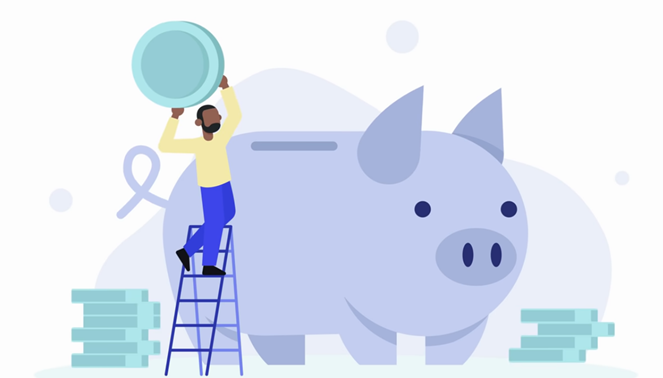After two long years of economic collapse because of the global pandemic, we’re finally going back up from the depression. But news headlines are yet again to show off a drumbeat of layoffs typically seen in recessions. The Nasdaq Composite has showed declined by about 11% in the early first quarter of 2022, poising a bad start to a year since the financial crisis back in 2008.
According to experts, now isn’t the time to panic just yet. Still, it is important to be alert and keep an eye on some datasets that may signal upcoming economic shocks.
While spot-checking the government employment data of various industries, some found indicators of a job crisis that penetrates deeply in the economy. Even sectors that aren’t supposed to get affected by the pandemic are manifesting patterns comparable to a severe recession.
Inflation was just about 2.4% in 2019 and 1.2% in 2020 but skyrocketed to 7.5% in 2022, which is way higher than expected—the highest increase since 1982. Experts have set 4% as the borderline, and anything beyond it is catastrophic. So, imagine having about 7.5% that is almost double the borderline. Thanks to this massive increase, the value of the $100,000 you worked your ass off to save would only be worth $93,000.
There’s a big chance for the United States to slip into recession in the coming months, so dismantling constraints and threats are clearly essential to future macroeconomic stability.
But…what causes recession?
Recession is basically the decline in economic activity, so it was pretty obvious why the world went through a recession during the pandemic where everyone was forced to stay at home. However, why is a recession coming, given the fact that we are getting back on track? Why isn’t the economy growing instead? The answer to these questions is quite simple.
Economic activity declines whenever a mismatch between demand and supply surfaces.
With high inflation comes high prices, leading to less demand. In line with this, the Federal Reserve System usually either lowers the interest rates or purchases government bonds with the aim to flood the market with ‘cheap’ money. This move would encourage demand.
Be that as it may, the Fed has already been purchasing bonds at an alarming rate and has been holding its interest rates near to zero in the past two years. The solution that Fed came up with cannot be undertaken anymore. Let alone that their latterly mentioned move was the one truly accountable for such high inflation.
Fed has another option, though.
If the Fed increased the interest rates, the price hike would be halted. But this option has its fair share of risk too. Because companies won’t be able to borrow money with a high-cost interest rate, there wouldn’t be enough money flowing into the economy. This may force many companies to cut their spending, leading to unemployment, which will result in less demand.
Less demand would make inflation drop, but at the risk of a recession. It is a risky gamble, and that’s why the Fed is looking for ways to put an end to recession without resorting to increasing the interest rates.
Since the end of World War II, we have been working to establish a strong global supply chain, but because of the global pandemic, the progress was slowed down. We are now far behind schedule. If Fed increased the interest rates, the progress would be much slower. It would be nearly impossible to restore the progress unless the pandemic gets completely annihilated, or at least, people learn to live with it.
Global trade is relying almost entirely on gigantic ships filled with containers. For instance, containerships that deliver ships from China to the United States don’t just empty the container but also fill them with American goods before heading back to China.
However, due to the pandemic, about 60% of all the containers were left out on the ports of the United States since there aren’t enough goods to fill them, and it’s pretty to ship them back empty to China.
According to reports, more or less 80,000 shipping containers were found piled high in Port of Savannah as there were no signs of supply chain crisis stopping. The empty shipping containers build-up while China has a shortage.
Only 40 out of 100 get shipped back from the United States to China, creating container shortage. Hence, fewer goods get shipped from China to the United States, knocking together shortage of goods in the United States, which increases the demand, and thus, inflation.
Now, the only option we’re left with to battle inflation is solving the supply chain. Once the raise gets raised, solving the supply chain will take quite a lot of time to solve because businesses won’t be able to borrow huge amounts of money. They won’t have enough resources to fix the supply chain.
Recessions don’t happen overnight. It creeps in a slow process. Not everyone knows this, but there’s actually more to recession than just a mere decline— stagflation
What is Stagflation?
Stagflation takes place when economic growth slows, inflation is high, and unemployment remains steadily soaring. If the Federal Reserve System would increase rates to beat inflation, the economy would slow down but will raise unemployment. However, the prices will keep rising due to the supply chain issue.
Inflation and Stagflation’s Impact on the Stock Market
We are not prepared for this. We’re still recovering from the pandemic, and some are still suffering great damages because of it—but perhaps, this may be the reason why you’re lucky enough to be reading this. You will have enough time to prepare for the next recession if you are an investor.
Back in the boom periods, the price of speculative assets rose dramatically because the economy got flooded with cheap money. This is the reason why cryptocurrencies and tech stocks have been thriving in the past two years, even when Covid-19 cases surge and millions are going hungry. Nonetheless, completely different things happen during a recession.
The non-fungible token (NFT) and cryptocurrency market are the ones who will be impacted negatively the most since these two investment models are topped up with scams. The NFT mania is alarming, and the number of people getting scammed is unbelievable. Investors in this field are the ones who suffer the most because people are less likely to speculate since there isn’t much money in the economy.
On the other hand, businesses that provide basic services, like the healthcare and food industry, are recession-proof. These companies thrive whether there’s a recession or not because, obviously, no one can live by without eating, and a person would see a doctor if he’s not feeling well regardless of how the economy is doing. Hence, companies like PepsiCo, Kroger, and Procter & Gamble will mostly keep ascending.
Preparing for the Next Recession
The ways how you could prepare for the next recession are pretty complicated since recession happens for a variety of reasons. Let alone that the future is unpredictable.
First and foremost, we are yet to solve the supply chains issue, so it will be quite difficult to hypothesize when inflation will be fixed. Secondly, we have no idea how Federal Reserve System will retaliate against a recession — will they raise the rates? By how much?
We can never be prepared enough for a recession. However, you will be able to cushion yourself against the market decline if you have cash. Since businesses are often left with great damage or even get bankrupt during a recession, having money will give you an excellent opportunity to find a good deal.



